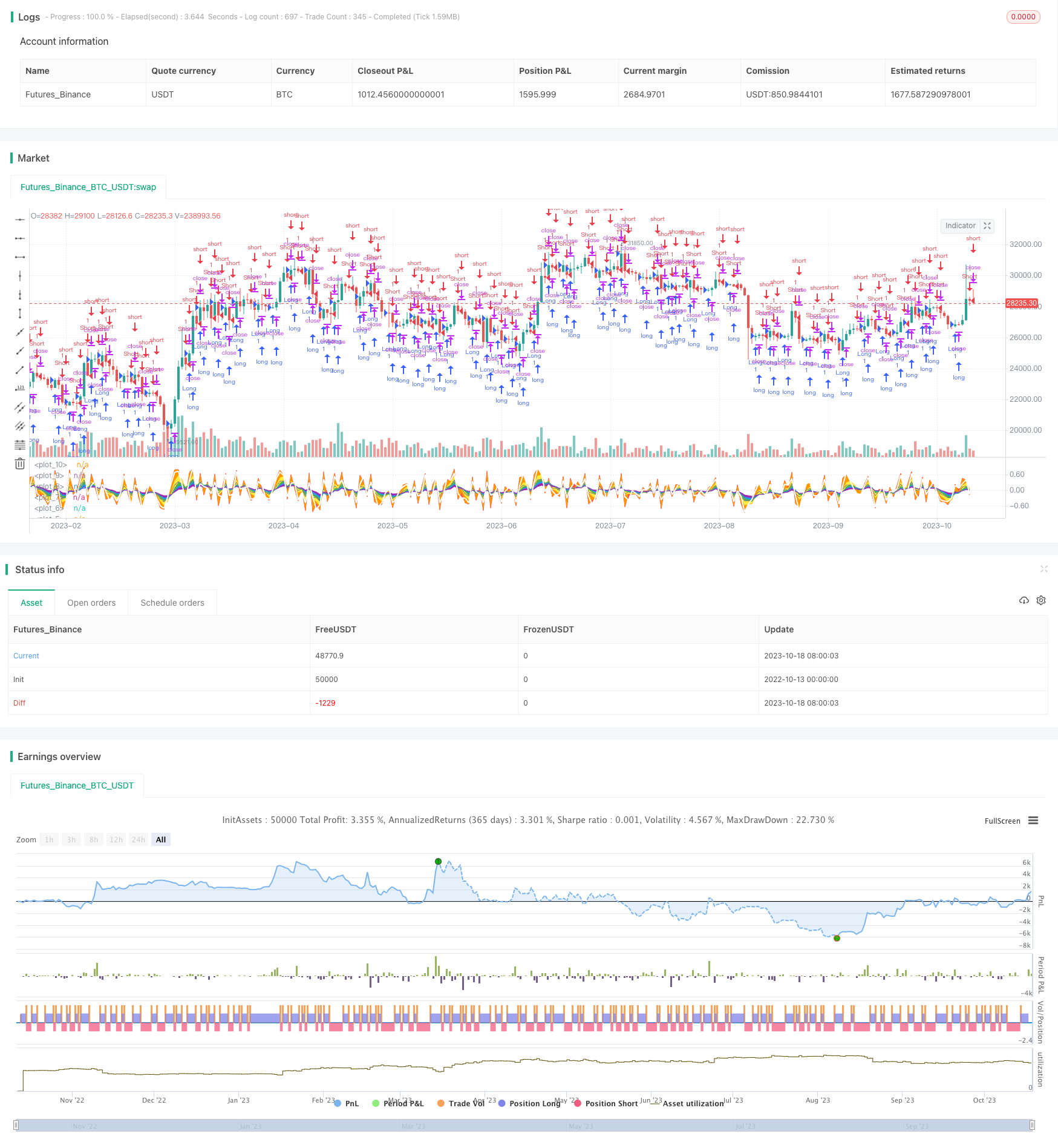
概述
振荡平衡策略是一种利用加权移动平均线和基本回看期来预测下一时刻价格走势的简单策略。它通过计算当前收盘价相对开盘价的位置比例,然后计算不同周期的指数移动平均线,最后结合历史数据判断价格的大概走势。
原理分析
该策略首先计算收盘价相对开盘价的位置比例:BoP = (close - open) / (high - low),然后分别计算3、6、9、12、18周期的指数移动平均线。
通过绘制不同颜色的移动平均线,可以看到短周期线优先发生方向转换,长周期线提供支持和阻力。填充不同移动平均线之间的区域,可以更直观地看到价格在不同均线之间的振荡。
再计算这些均线的算术平均值,得到一个综合均线。然后看这个综合均线在过去两个周期的变化,预测它在下个周期的走势。如果综合均线上涨,那么可以做多;如果下跌,可以做空。
这样,就利用历史数据计算出一个大概的未来走势预测。虽然非常简单,但结合视觉上的均线和填充,可以直观地看到价格的振荡情况。
优势分析
该策略有以下优势:
原理简单,容易理解和实现。
将复杂的价格历史聚合到简单的综合均线上,通过均线的方向判断买卖点。
多种周期的均线组合,提供更全面的参考。短周期线确定具体买卖时机,长周期线决定大趋势。
通过填充均线之间的区域,形成直观的视觉效果,可以清晰看到价格的振荡。
不需要设置止损和止盈,避免过多无谓交易。
风险分析
该策略也存在以下风险:
预测仅基于过去数据,无法确定未来必然发生。需要结合趋势和关键价位进行验证。
若突发事件导致价格急速变动,预测结果会不准确。需要做好风险控制。
多种均线可能产生混乱信号,需要优化权重。
交易频率可能过高,需要控制interval来减少不必要交易。
策略信号发生滞后,可能导致进入过晚和止损过早。
优化方向
该策略可以从以下几个方面进行优化:
对均线的权重进行优化,使得信号更清晰。例如增大中长线周期均线的权重。
添加趋势指标的确认,避免逆势交易。例如使用ADX判断趋势强弱。
在关键支撑阻力区域添加过滤条件,减少错误信号。
优化买卖条件,避免无谓开仓。可以设置趋势过滤或者增加volume确认。
优化止损方式,例如采用曲线止损或ATR止损。
添加情绪指标避免追高杀跌。例如看多空指标、资金流向等。
控制interval,降低交易频率。或优化交易次数,避免过多交易。
总结
振荡平衡策略通过计算价格的振荡指标,结合多周期均线的视觉效果,形成简单直观的买卖点判断方法。虽然存在预测滞后和判错风险,但可通过添加过滤条件、止损方式等进行优化,在趋势交易时提供辅助REFERENCE。该策略适合短线频繁交易,以及视觉形态分析者。
/*backtest
start: 2022-10-13 00:00:00
end: 2023-10-19 00:00:00
period: 1d
basePeriod: 1h
exchanges: [{"eid":"Futures_Binance","currency":"BTC_USDT"}]
*/
//@version=4
strategy(title="Balance of Power", format=format.price, precision=2)
BoP = (close - open) / (high - low)
p1 = plot(ema(BoP,18),color=color.purple)
p2 = plot(ema(BoP,12),color=color.blue)
p3 = plot(ema(BoP,9),color=color.green)
p4 = plot(ema(BoP,6),color=color.yellow)
p5 = plot(ema(BoP,3),color=color.orange)
p6 = plot(BoP, color=color.red)
sumEMA = (avg(BoP,ema(BoP,3),ema(BoP,6),ema(BoP,9),ema(BoP,12),ema(BoP,18)))
plot(sumEMA,color=color.gray)
fill(p1,p2,color.purple)
fill(p2,p3,color.blue)
fill(p3,p4,color.green)
fill(p4,p5,color.yellow)
fill(p5,p6,color.orange)
projected = sumEMA + (sumEMA - sumEMA[2])
p7 = plot(projected, linewidth=2, color=color.white)
fill(p6,p7,color.red)
//strategy.exit("exitx","Exit",when=cross(projected,0))
strategy.entry("Long",true,1,when=crossover(projected,0))
strategy.entry("Short",false,0,when=crossunder(projected,0))